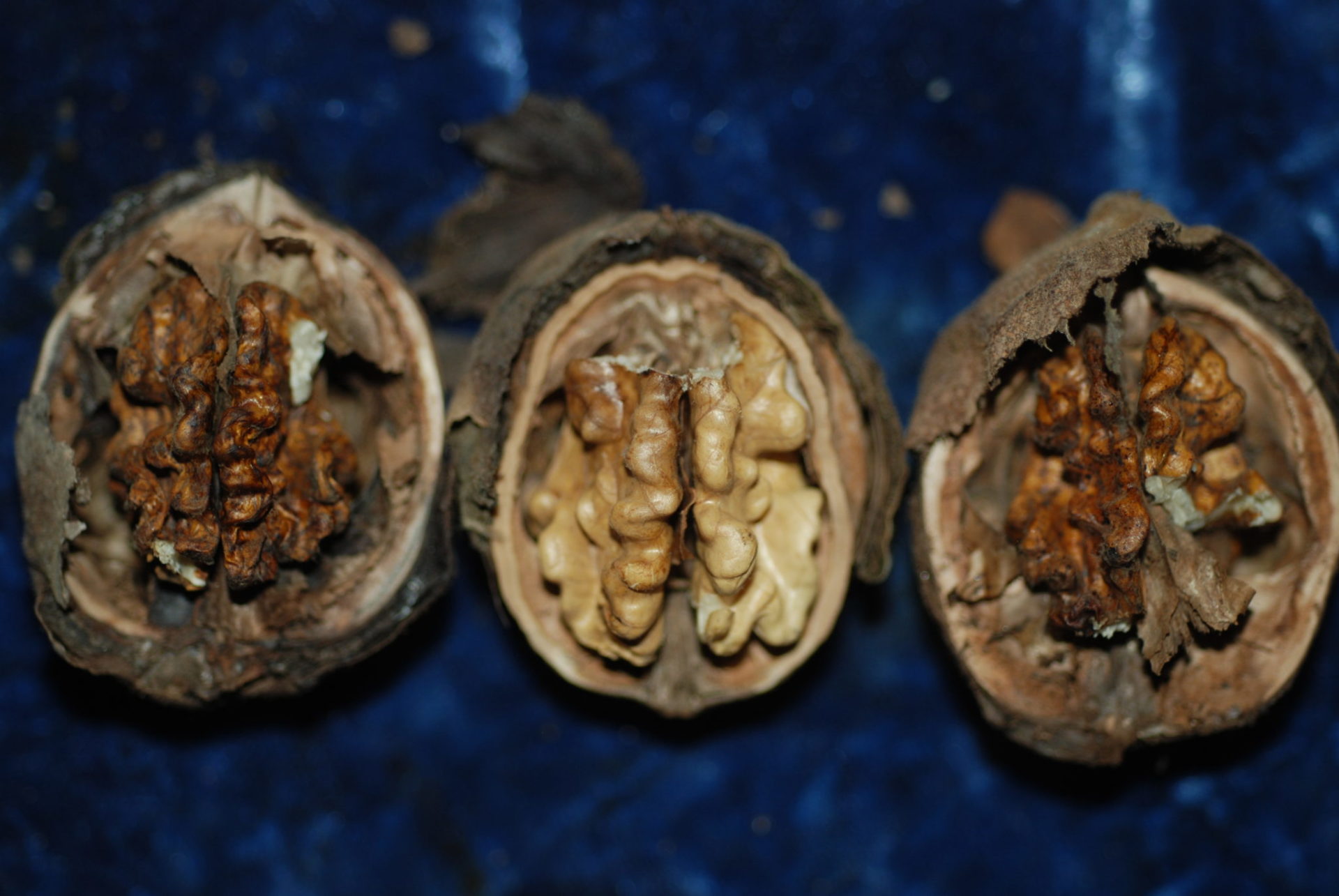
After elevated levels of mold were found in the 2018 walnut harvest, UC Davis plant pathologist Themis Michailides started work to identify which microorganisms were causing mold, indicators of mold development and if the pathogens that attacked hulls were the same as those causing kernel mold. He also aimed to develop management methods to reduce mold.
Funded by California Walnut Research board, Michailides’ work continues this year.
Mold development is higher in some years, Michailides said, as he is correlating mold levels with weather data. Mold levels can also depend on location of an orchard.
Most walnut mold develops from Fusarium and Alternaria species, though Botryosphaeria and Phomopsis can also cause walnut mold. Walnut blight infections can create a secondary entry for Fusarium and Alternaria species. These are a specific type of walnut mold called brown apical necrosis (BAN.) This infection expands under the hull and spreads to the kernel via the stem end opening.
The walnut blight bacterium along with mainly Alternaria, Fusarium, Aspergillus, Botryosphaeria and Phomopsis to some extent result in BAN. The disease complex can reduce crop yields due to premature fruit drop.
Michailides’ research showed that mold fungi can start as latent infections in hulls and then as the hulls mature invade and develop in or on the kernel.
Factors that predispose developing walnuts to mold include sunburn and insect infestations. Some walnut varieties are more susceptible to mold, particularly those with larger stem-end openings.
Walnut mold spray timing is later than the BOT prevention spray, and the fungicide program for BOT will not control mold. Walnut mold begins when the hull completes maturity and begins to split, and that occurs after BOT prevention spray applications.
Michailides’ research showed that pre-hull split sprays and early hull split sprays reduced walnut mold in two of the orchards in the study, but a late hull split spray did not reduce mold growth.
A critical management practice to avoid crop damage due to mold is timely shake and pick up. Research done by UCCE Butte County Emeritus farm advisor Bill Olson showed that mold and other quality issues increase the longer the crop is left on the ground. Picking up the same day as shaking is optimal, particularly for non-Chandler blocks.
Fungicide management for mold continues to evolve with the first studies conducted in 2019. Sac Valley Orchard reports that in a trial in Chandler in Butte County, the fungicide Rhyme (a.i. flutriafol) was tested and a single spray at 30 or 60% hull split reduced mold by 70%.
More efficacy trials are planned. Find efficacy results against Bot/Phomopsis canker and blight at ipm.ucanr.edu/PDF/PMG/fungicideefficacytiming.pdf.
















